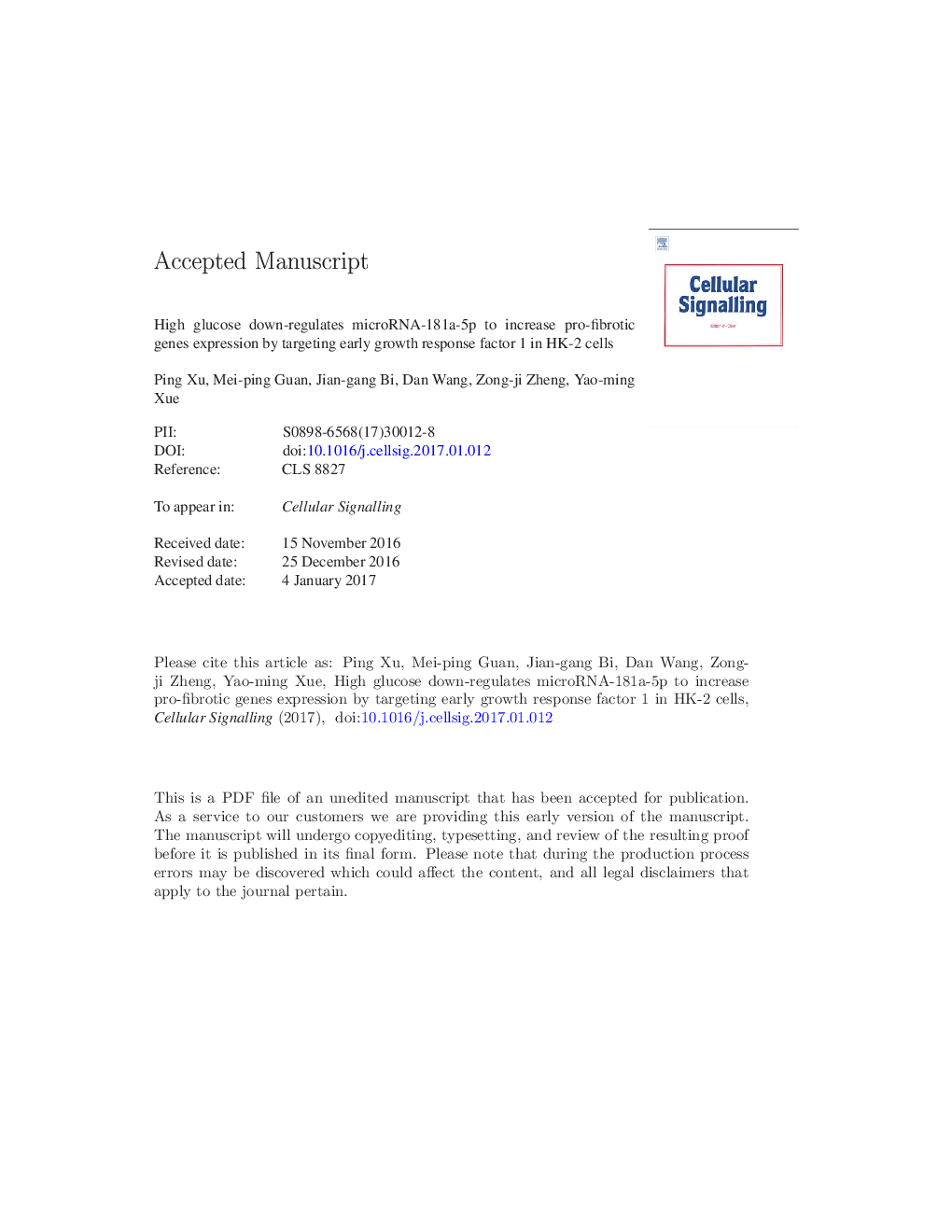| Article ID | Journal | Published Year | Pages | File Type |
|---|---|---|---|---|
| 5509395 | Cellular Signalling | 2017 | 38 Pages |
Abstract
Tubulointerstitial fibrosis (TIF) plays an important role in the progression of renal fibrosis in diabetic nephropathy (DN). Accumulating evidence supports a crucial effect of early growth response factor 1 (Egr1) on renal fibrosis in DN, but the underlying mechanisms are not entirely clear. Here, we explored the aggravating role of Egr1 and identified microRNA-181a-5p (miR-181a-5p) as an upstream regulator of Egr1 in TIF of DN. We demonstrated that overexpression of Egr1 enhanced, whereas small interfering RNA targeting Egr1 decreased the expressions of transforming growth factor β1 (TGF-β1) and fibrosis-related genes including fibronectin and collagen I in human proximal tubule cell line (HK-2) cells. We then found that miR-181a-5p expression was down-regulated, accompanied by the corresponding up-regulation of Egr1, TGF-β1, fibronectin and collagen I in renal tissues of type 2 diabetic Otsuka-Long-Evans-Tokushima-Fatty rats with DN, and that the expression of miR-181a-5p was negatively correlated with the level of Egr1 in HK-2 cells treated with high glucose. Furthermore, we identified that miR-181a-5p directly suppressed Egr1 to decrease the expressions of TGF-β1, fibronectin and collagen I in HK-2 cells through targeting the 3Ⲡuntranslated region of Egr1. The functional relevance of miR-181a-5p-induced Egr1 decrease was supported by inhibition and overexpression of miR-181a-5p in HK-2 cells. Thus, we concluded that aberrant Egr1 expression, which can be suppressed by miR-181a-5p directly, plays a crucial role in the progression of renal TIF in DN. This study indicates that targeting miR-181a-5p may be a novel therapeutic approach of DN.
Keywords
EGR1DKDRenal tubulointerstitial fibrosisHK-2 cellHK-2TIFOLETFECMHEK293qRT-PCRDMEMTGF-β1FBSDulbecco's modified Eagle's mediumESRD یا end stage renal diseaseEnd-stage renal diseaseDiabetic kidney diseaseTransforming growth factor β1LETOfetal bovine serumhuman embryonic kidney 293 cell lineearly growth response factor 1Tubulointerstitial fibrosisFibronectinExtracellular matrixUTR یا untranslated regions untranslated regionDiabetic nephropathyquantitative real-time polymerase chain reactionCol ICollagen Ihigh glucosenormal glucose
Related Topics
Life Sciences
Biochemistry, Genetics and Molecular Biology
Biochemistry
Authors
Ping Xu, Mei-ping Guan, Jian-gang Bi, Dan Wang, Zong-ji Zheng, Yao-ming Xue,
